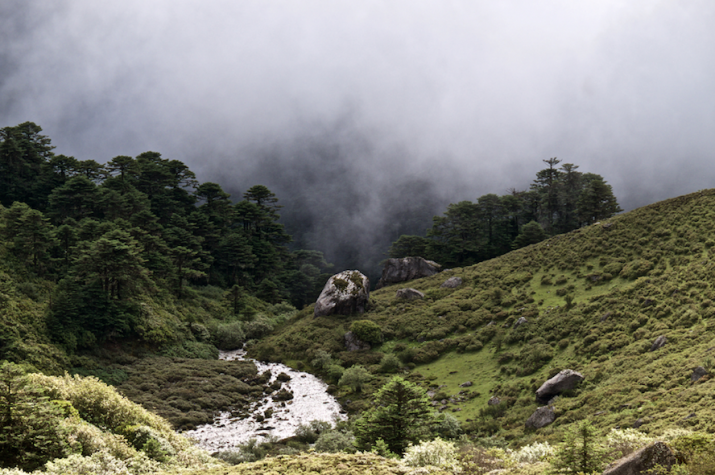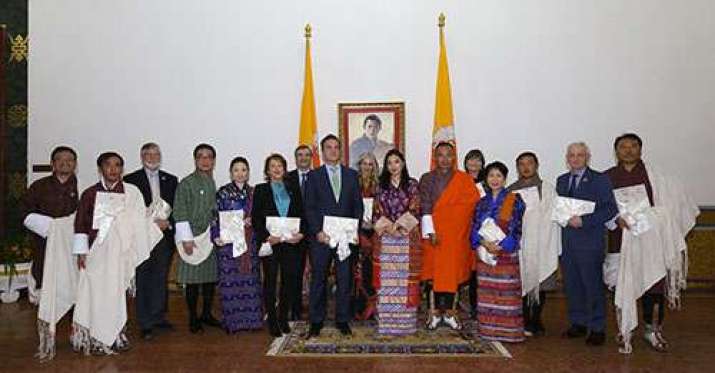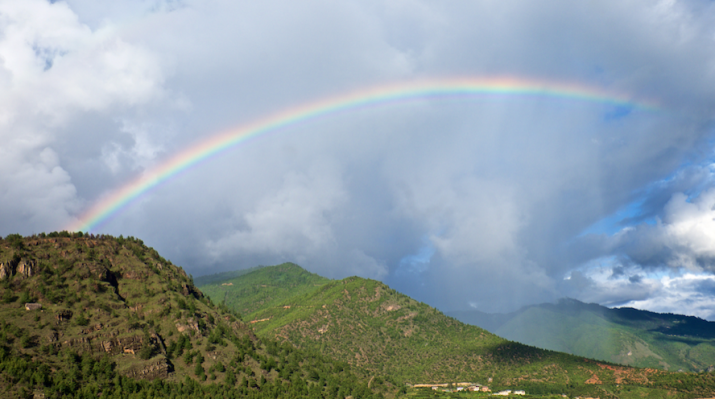NEWS
Bhutan, WWF Launch US$43m Conservation Program for Protected Ecosystems
 Bhutan’s high level of forest cover absorbs more carbon dioxide than the country produces. Photo © Craig Lewis. From newlightdreams.com
Bhutan’s high level of forest cover absorbs more carbon dioxide than the country produces. Photo © Craig Lewis. From newlightdreams.comThe Kingdom of Bhutan has launched a progressive conservation initiative backed by a US$43 million fund, in cooperation with the the World Wildlife Fund (WWF) and partners from around the world, and aimed at providing permanent protection for the Himalayan nation’s extensive network of protected conservation areas.
Dubbed “Bhutan for Life,” (BFL) the initiative has an ambitious list of goals that include monitoring and protecting wildlife and habitats, maintaining the kingdom’s forest cover and pledge to remain carbon neutral, supporting communities living in protected areas through job creation and improved infrastructure, and strengthening the management and enforcement of protected ecosystems. The US$43 million project will be combined with US$75 million in funding from the government of Bhutan, to be contributed over 14 years.
A small Vajrayana Buddhist nation, sandwiched between northern India and Tibet, with a population of fewer than 800,000 people, Bhutan is no stranger to the concept of responsible environmental stewardship that accompanies its conservative approach to economic development: it also is renowned as one of the Earth’s rare but essential carbon sinks.* In addition, as home to an estimated 103 wild tigers, the kingdom has taken on a key role in tiger conservation, taking strides to ensure tiger safety and to encourage natural breeding in a region where poaching and the illegal wildlife trade are rife.**
Timed to coincide with the birthday of Bhutan’s previous monarch, the 4th Druk Gyalpo (Dragon King), Jigme Singye Wangchuck, father of the reigning 5th Druk Gyalpo Jigme Khesar Namgyel Wangchuck, the initiative was launched on 11 November by Druk Gyaltsuen (Dragon Queen) Jestun Pema, queen consort of the reigning Druk Gyalpo.
 Queen consort Jestun Pema with government and WWF officials. From kuenselonline.com
Queen consort Jestun Pema with government and WWF officials. From kuenselonline.com“It is in this protected areas network, and the wildlife corridors that connect them, that most of the country’s treasured natural resources can be found,” said Prime Minister Dasho Tshering Tobgay at a ceremony to launch the project. “However, these natural resources are at risk as the country is changing fast. To address the increasing threats to our pristine environment, Bhutan needs a solid new conservation-friendly business plan: one that will not just protect, but will help grow the initial capital Bhutan has put into its incredible conservation efforts, and one that will allow both conservation and economic development to occur in a balanced, sustainable way, in perpetuity. That plan is in the form of BFL.” (WWF)
Perhaps best known for prioritizing Gross National Happiness (GNH) over the profit-driven acquisitiveness of unrestrained economic growth, the Buddhist kingdom of Bhutan, nestled high in the rarified air of the eastern Himalayas—one of the world's 10-most biodiverse regions—has conservation mandated in its constitution, which requires that 60 per cent of its land be preserved under forest cover. Indeed, conservation of the environment is one of the four pillars of its GNH philosophy: the country is home to the highest percentage—in excess of 51 per cent—of protected land in Asia.
“Our natural resources are our most important asset,” said WWF Bhutan’s country representative, Dechen Dorji. “They are the foundation for our livelihoods, spiritual connectivity, happiness, and our commitment to being carbon neutral. The Royal Government of Bhutan’s leadership in adopting an innovative solution that guarantees permanent protection as well as effective management of our protected areas secures Bhutan’s future and will enable Bhutan to serve as a powerful model for the world.” (WWF)
 Bhutan is home to the highest percentage of protected land in Asia—in excess of 51 per cent. Photo © Craig Lewis. From newlightdreams.com
Bhutan is home to the highest percentage of protected land in Asia—in excess of 51 per cent. Photo © Craig Lewis. From newlightdreams.comAlmost 75 per cent of Bhutanese identify as Buddhists, according to data for 2010 from the Washington, DC-based Pew Research Center, with Hinduism accounting for the majority of the remainder. Most of Bhutan’s Buddhists follow either the Drukpa Kagyu or the Nyingma schools of Vajrayana Buddhism.
* Bhutan’s high level of forest cover means that not only has the kingdom met its pledge to remain carbon neutral, it is actually a carbon sink, meaning its forests absorb more carbon dioxide than the country produces.
** Rare Wild Tiger Caught On Camera in Bhutan (Buddhistdoor Global)
See more
Bhutan, WWF and Partners Announce Deal to Permanently Secure Bhutan’s Extensive Network of Protected Areas (WWF)
Bhutan launches USD 43M conservation initiative (Kuensel)
WWF Bhutan
Related news from Buddhistdoor Global
Bhutan Proposes a Buddhist Approach to Business at 7th International Conference on Gross National Happiness
India to Loan 252-year-old Statue of Zhabdrung Ngawang Namgyal Rinpoche to Bhutan
New Report Shows Snow Leopards Under Grave Threat from Poaching
Bhutan Convenes Inaugural International Conference on Vajrayana Buddhism
Related features from Buddhistdoor Global
A Manifestation of Profound Wisdom and Compassion—Remembering Dilgo Khyentse Rinpoche
Dances of the Luminous Bardo
Invisible Twice: A Lost Dance Mural
An Agent of Change: Empowering Bhutanese Nuns
Buddhistdoor Special Issue 2017














